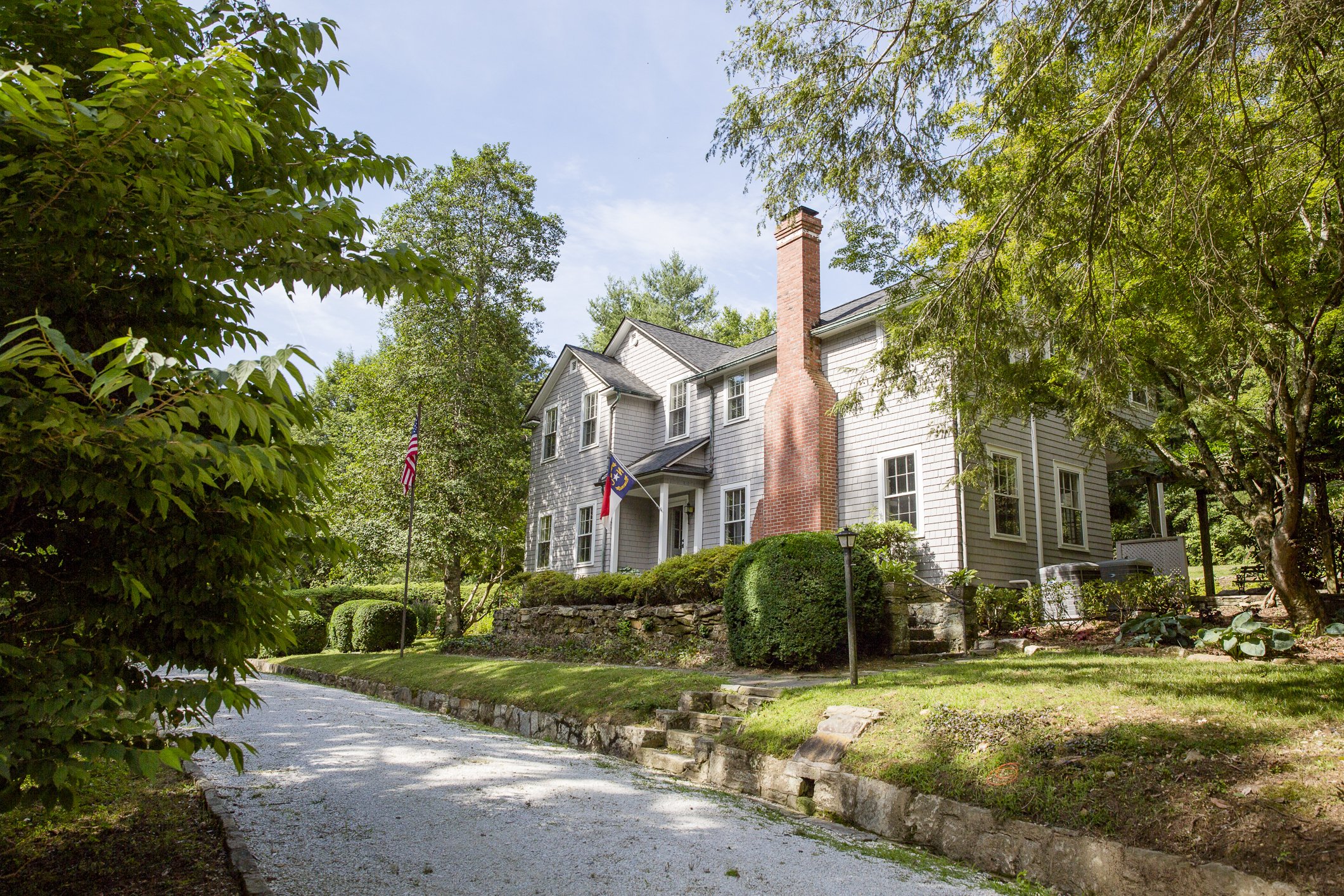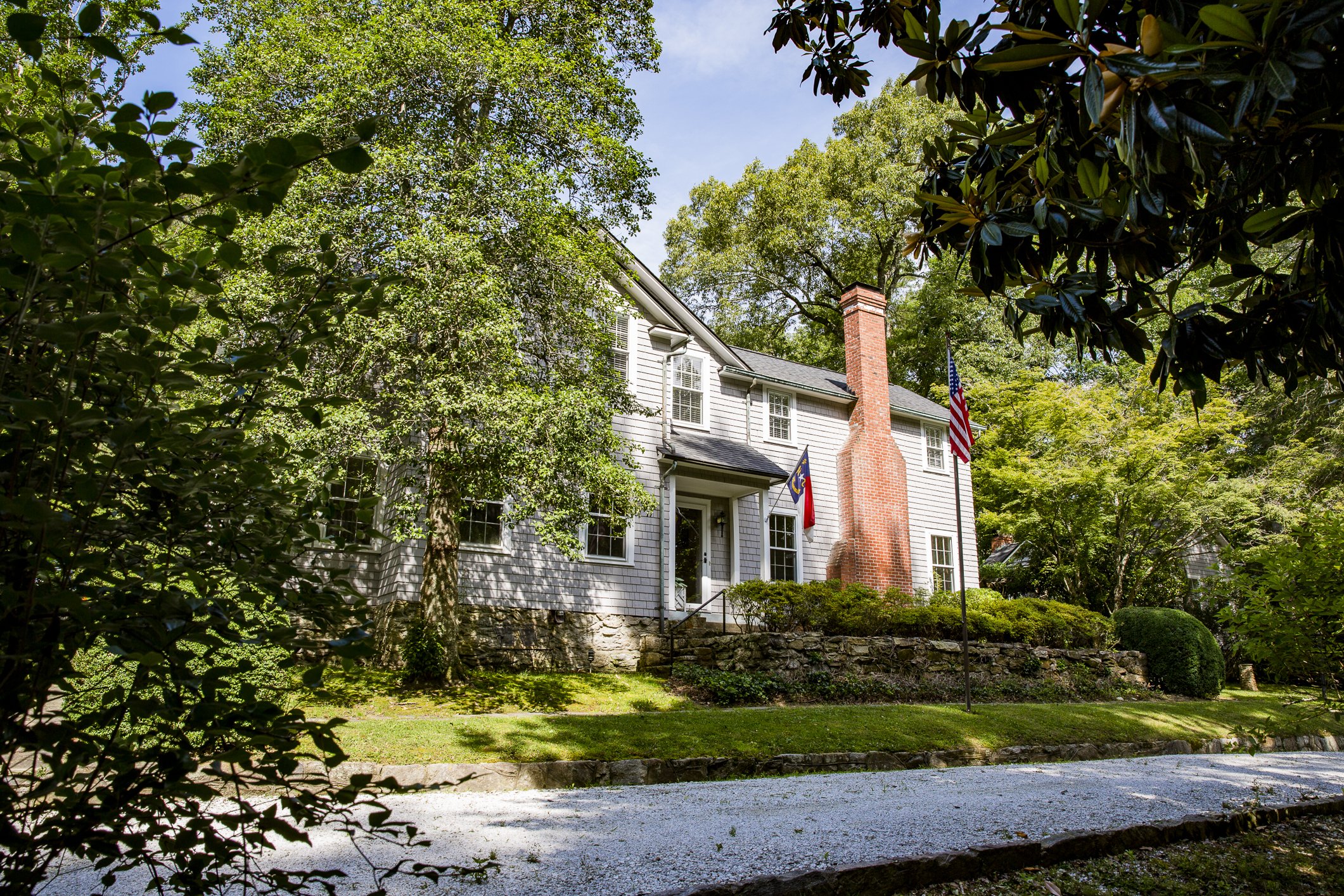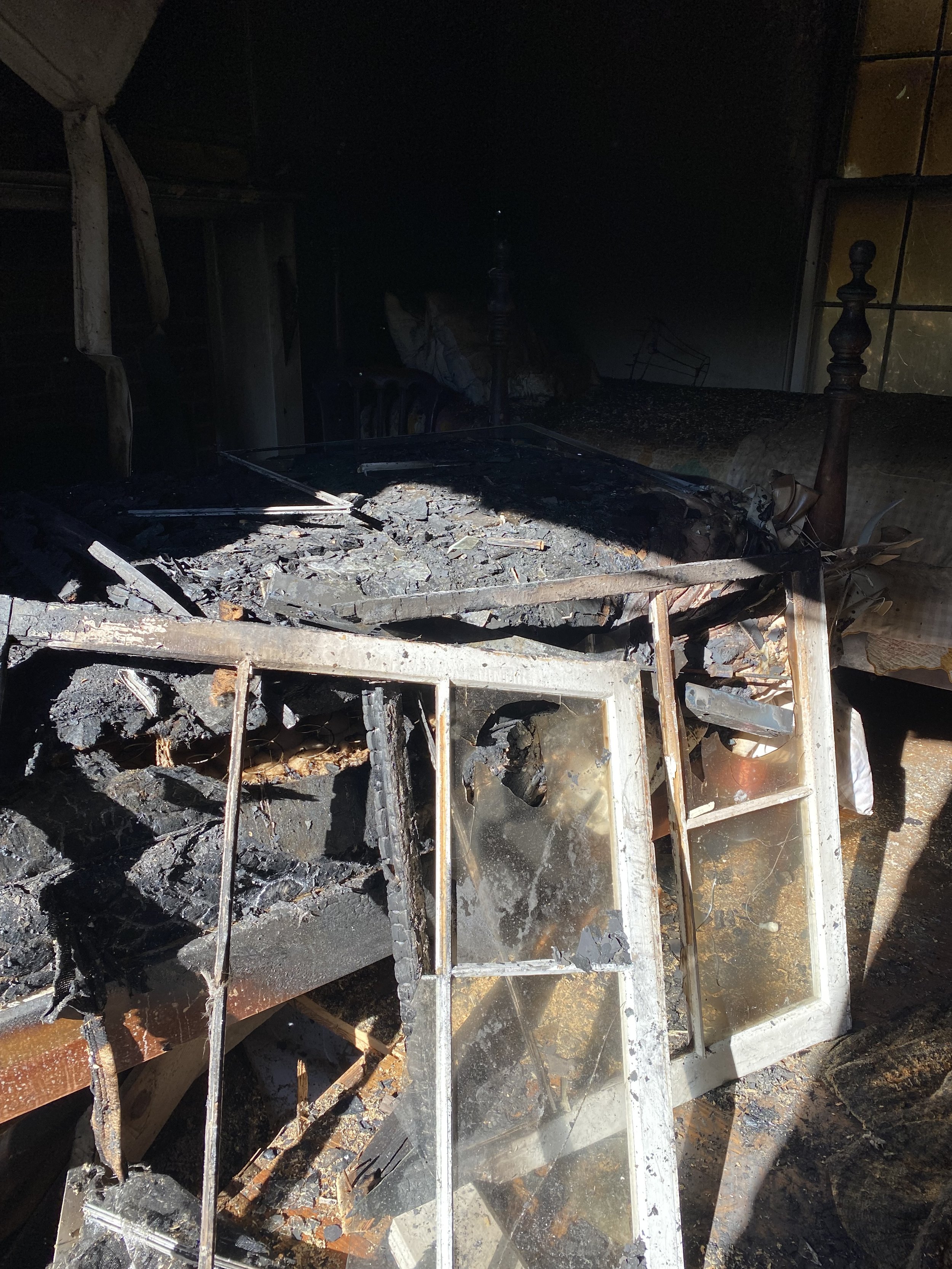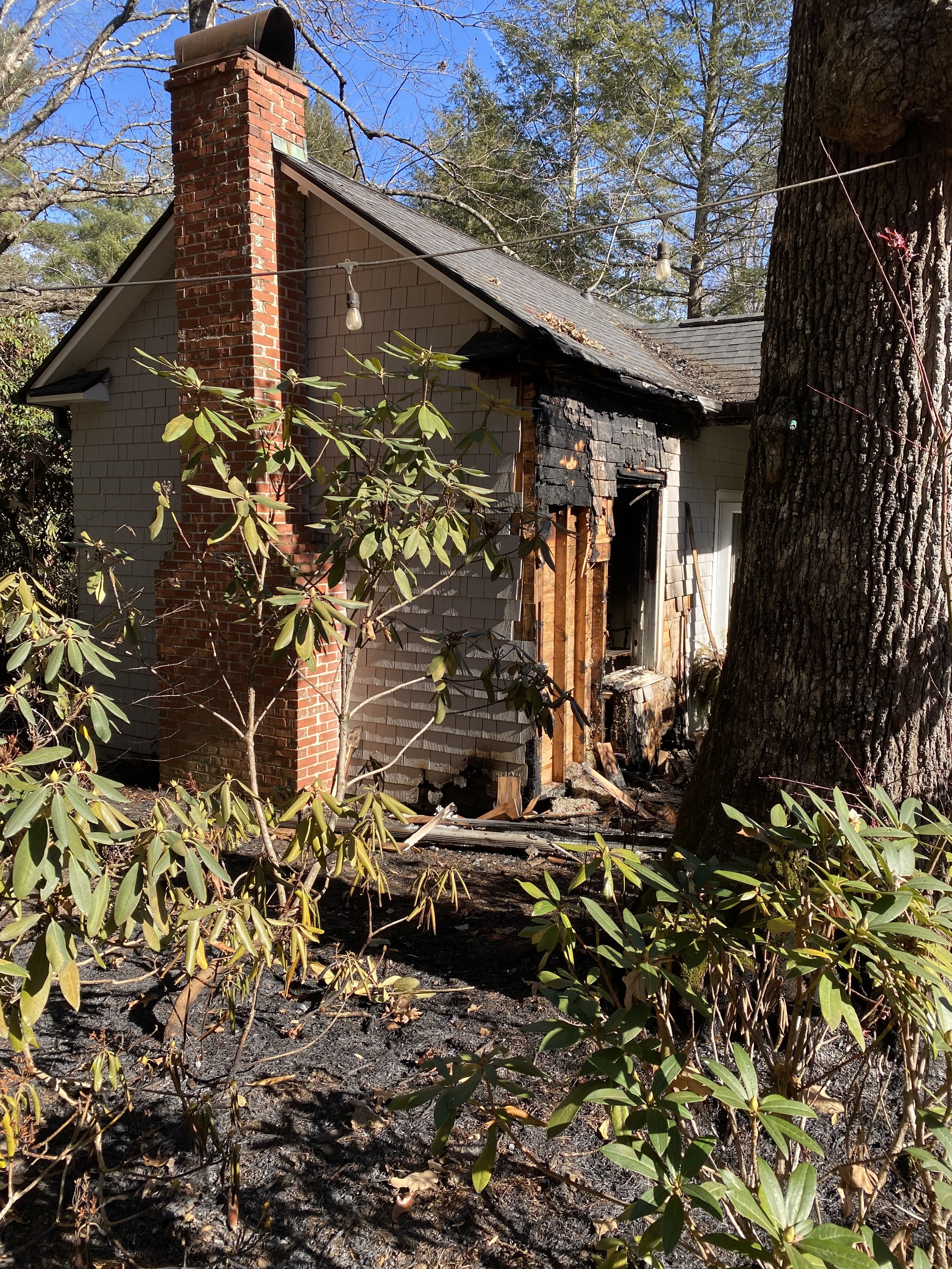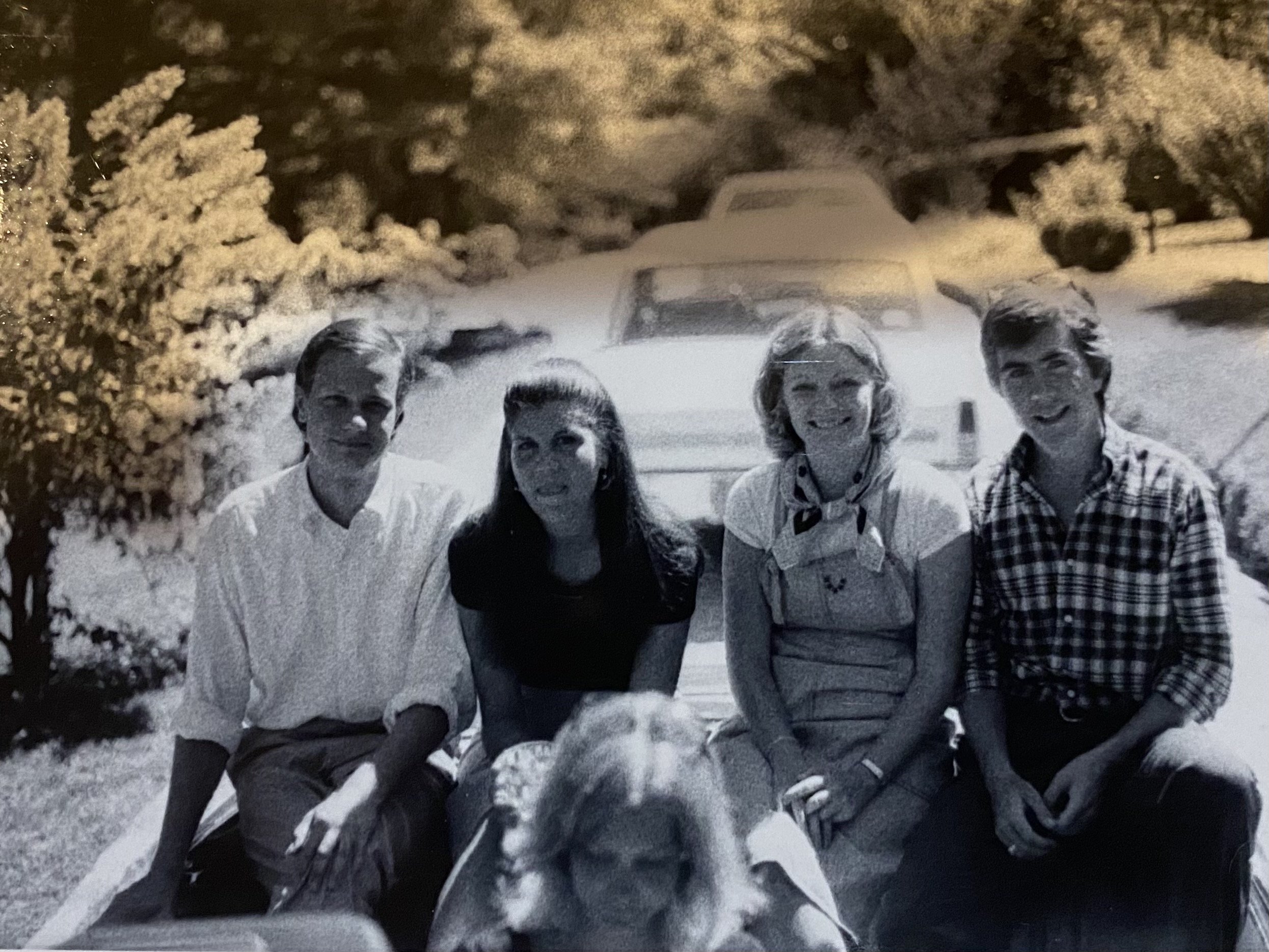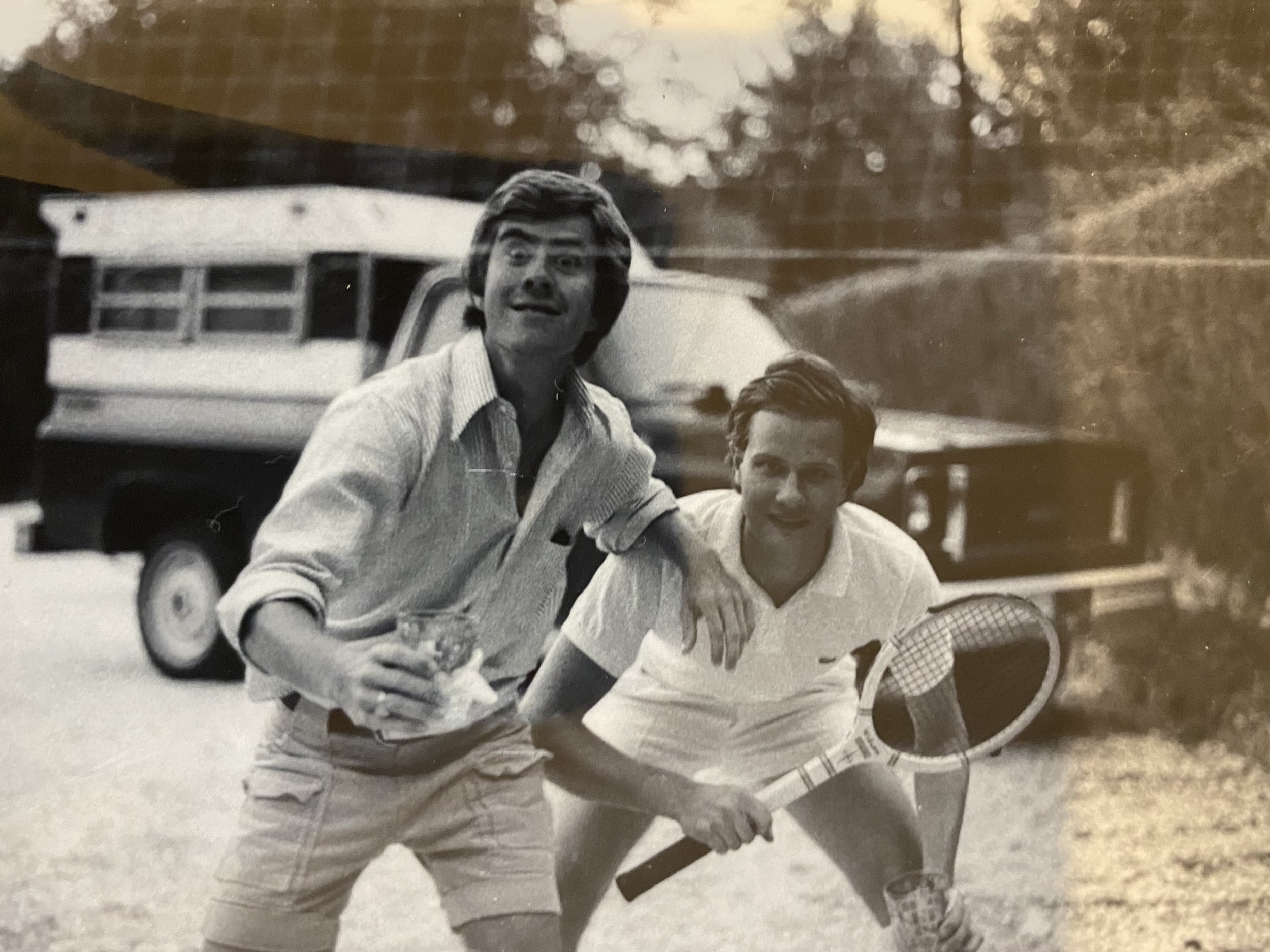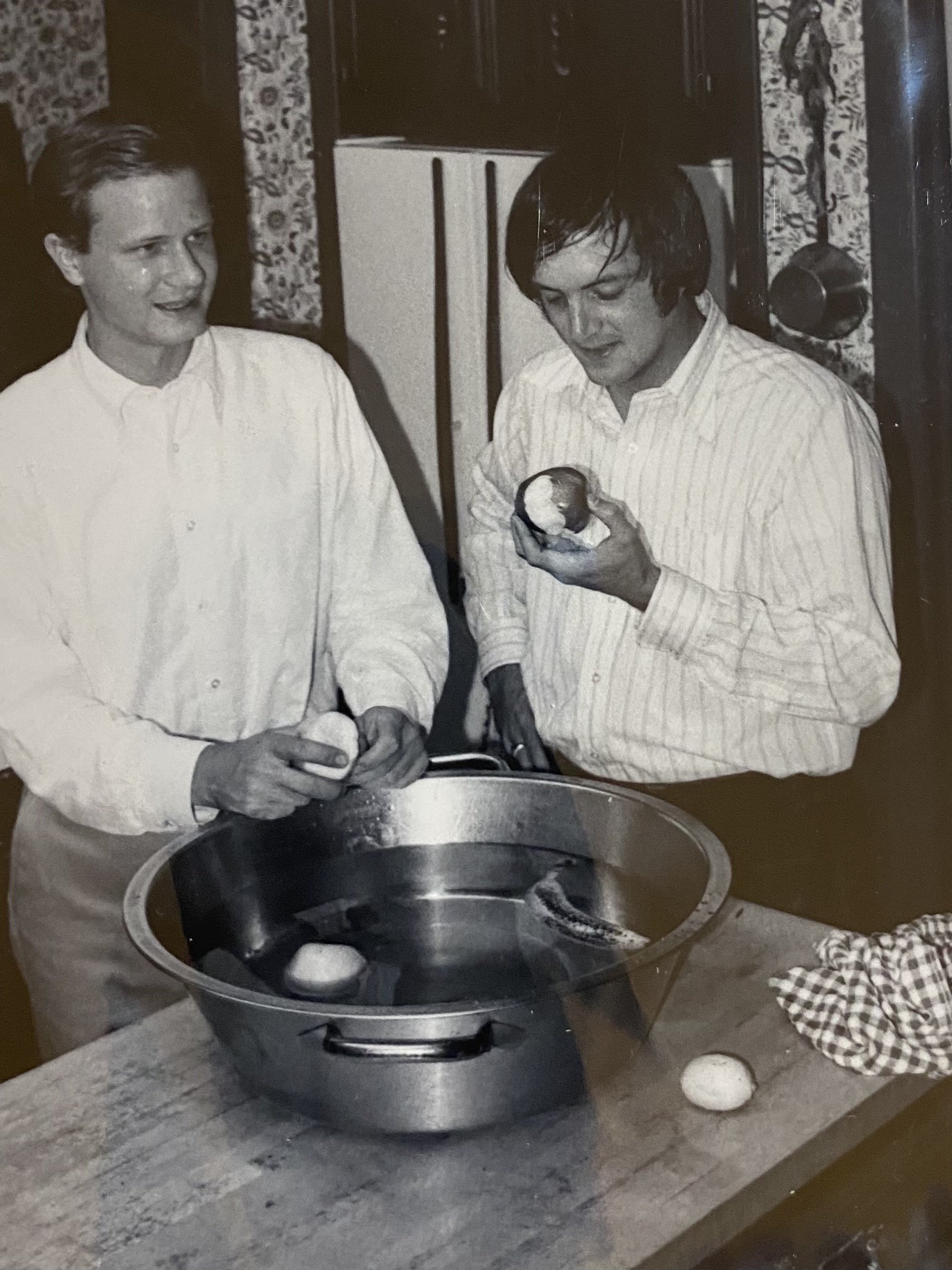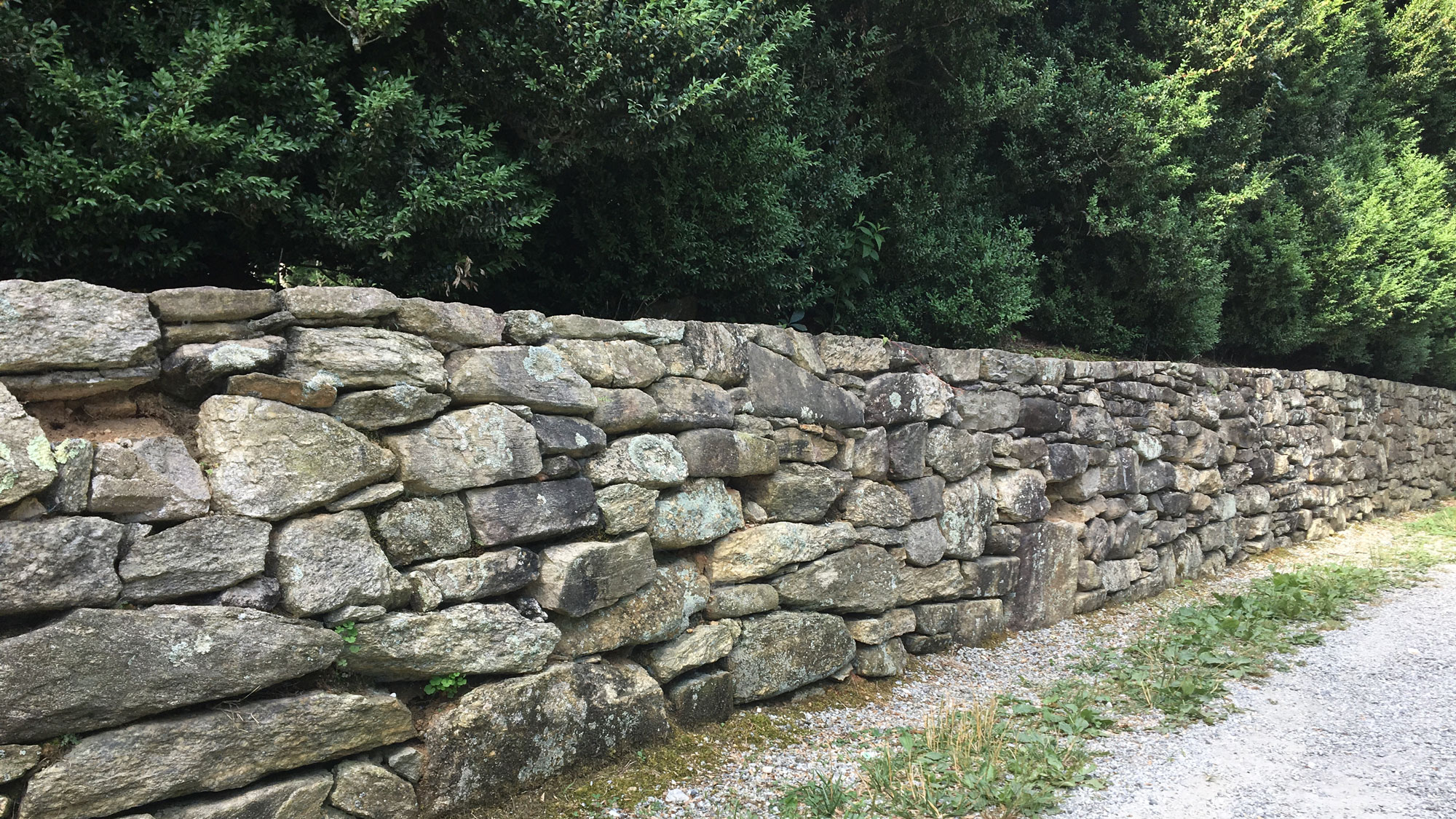Fire in Flat Rock
/By Missy Izard Schenck
December 1, 2021
The Little Hill
Sunday night, November 28, 2021 was a wake-up call for the Village of Flat Rock. A fire that erupted early that evening on one of the historic properties of the community could easily have destroyed the entire estate had it not been for neighbors and the prompt response of the Blue Ridge Fire Department.
The Little Hill, near the center of Flat Rock’s business district, has been part of the Laurens family since 1907. Henry Rutledge Laurens of Charleston purchased the 23 acres of land from the estate of Squire Farmer. “The land was once part of one of the oldest inns in the region, the King’s Tavern or Old Inn that later became the Woodfield Inn, now the Mansouri Mansion until my great grandfather’s purchase,” according to John “Chip” Laurens, III.
“The Inn was a welcomed refuge from the arduous climb into the mountains from the lowlands of South Carolina. The actual site of the Old Inn was a front field bordering Highway 25 between The Little Hill’s main entry and the entry to Mansouri Mansion. Flat Rock’s first post office was in the inn. Locals objected to it because they didn’t want a brewery in the same place as the post office. During the War Between the States, the Old Inn burned; all that remains is the old spring. The spring basin was carved from a solid piece of local granite and had a granite trough that fed cold water into a covered spring house surrounded by rough granite slabs, steps, and an old primitive stone bench.” Chip says. Keeping in line with the hospitable theme of the Old Inn, Little Hill has “always been a welcoming place for everyone,” says Patty Laurens Adams, Chip’s sister and one of the current owners of The Little Hill.
Henry Rutledge Laurens never built a residence on the property. According to Chip’s history of the Little Hill, “Henry and his wife, Charlotte Hume Simons, had brought eight children into the world from 1886 to 1898. By the time he purchased the Flat Rock property at the age of 60, he did not have the energy or the enthusiasm to build a summer house that would accommodate his large family.”
In the 1930s, the eldest son, Henry Laurens of Charleston and his wife, Dorothea Dexter Laurens of New Haven, Connecticut, purchased the property from his seven siblings. At that time, Henry Laurens was head of the Department of Physiology at Tulane University in New Orleans. “My grandfather was convinced that Gaga (Chip and Patty’s grandmother) needed to get out of the heat and drinking climate of New Orleans. The salubrious climate of North Carolina was the answer,” recalls Chip. The Dean of the School of Architecture at Tulane, J. Herndon Thomas, was commissioned to design the house. “Gaga wanted the house built in a Cape Cod image, says Chip. She loved the simple shingle cottages she had known on the beach at Pine Orchard in Connecticut and had the house designed without the typical large windows, eaves and porches more representative of summer dwelling in the South. The plan had the garage, kitchen and servants’ stairs in the rear, with the breakfast room, dining room, main stair hall and living room located across the front of the house.”
The second floor was designed with only two bedrooms and a large dormitory that opened onto the rear sleeping porch. Two servants’ bedrooms were at the second floor rear over the garage. The living room opens onto a flagstone porch and wisteria arbor that leads to a small two-bedroom guesthouse. The arbor was an original feature of the architect’s design. The caretakers, who worked with local masons, horse-drawn scrapers and hand labor, laid out the grounds and white gravel chat roads in the typical Flat Rock style. The hemlock hedge around the cutting flower garden at the south end of the residence and the large white pine and hemlocks lining the roadways and fields were all transplanted from the surrounding forest. The forest begins behind the main residence’s west elevation and slopes gracefully down to Ravenswood Lake at the rear of the property.
Chip and Patty, along with their two other sisters, Becky and Martha Dexter (Dede) lived in Little Rock, Arkansas with their parents, Dr. and Mrs. John Laurens, II. Summers were spent going to Flat Rock and summer camp in Western North Carolina. Family and friends from Charleston and Little Rock were always a part of their summers in the mountains. Patty tells me, “Growing up, Mom was all about family and friends and being at the Flat Rock house together. It is a tradition that continues today.”
In 1973, Dr. and Mrs. Laurens purchased the house from his brothers and became full-time residents of Flat Rock. Traditions at The Little Hill started with Helen Laurens, Patty and Chip’s mother. She loved holidays and inviting family, in-laws, children, grandchildren, and friends to share the event with them. From the July 4th picnic to Easter, Thanksgiving and Christmas, Little Hill was and is today alive with an enjoyable experience for all.
Patty reminisces of a time when she was in college at the University of South Carolina and her parents told her to bring some friends up for the weekend. “My mother got inner tubes from 18 wheelers and had them blown up. Dad had a truck and we all went tubing on the Green River.” Another funny story that Chip and Patty tell is about a time they had a house party at Little Hill and their mother went to McFarlan’s Bakery and bought 40 cream pies. “We were all playing softball on the front field and mom stopped by the field and opened up the back of her car. It was full of pies for us to have a huge cream pie fight in the front field.”
Missy and friends at The Little Hill in the 1970s.
As a frequent visitor to the Laurens household, I can convey that some of the most entertaining times I had in college and beyond were at The Little Hill. Mrs. Laurens was such a welcoming parent and hostess. Often our house parties had themes including lawn parties and croquet games. There was always an element of fun. This is something that Patty and the rest of her family have carried on today with holiday gatherings at The Little Hill. “The house is a place where at least twice a year all the cousins can get together,” says Patty. “We always go for Thanksgiving and Easter. Chip makes place cards with questions about Laurens’ family history. He is frequently the only one to know the answer! Hats are usually involved, including some that were my mother’s. It is a great time for everyone.”
In 2014, Patty and her husband, Jeff Adams, along with Sydney and Ed Taylor (Ed was married to Patty’s sister, Martha Dexter Laurens, who died in 2004), bought the house from their two other siblings. “Flat Rock is our childhood home. It is where my two sisters and I were married and two of our daughters, too. Many of our family are buried at St. John in the Wilderness. To Patty, “The Little Hill offers the magic of having a place to celebrate our lives.”
Fire damage to the guest house
This past Sunday night the heart of the Laurens family, The Little Hill, came close to burning to the ground. A passerby from Kenmure saw the flames and called 911. Luke Hunter who lives across from the property in Ravenswood saw it, too, and immediately called 911. Normally, a short walk through the woods, Luke drove over to The Little Hill because the woods were on fire. He arrived at the same time as the firemen plowed through the gate to begin tackling the fire that had spread over approximately four acres of the property. “There was a ring of fire all the way around the hill. The trees were on fire and I could see that the guest house was burning. It was apocalyptic in every way.” said Luke. This immediate response saved the main house that was within a few feet of being attacked by the flames from the guest house. The firemen were heroes as well as Luke and the initial caller.
When I arrived on the scene, I watched from the driveway with Luke as the firemen diligently controlled the fire. The evening winds did not help. It had only been hours since the Laurens family left The Little Hill after a traditional Thanksgiving holiday with three generations of their clan. In this surreal moment, visions of laughter and happy times reminded me of the many memories this place held and I prayed it would survive.
Diamond in the Desert burned in 1960.
The work of the firemen was nothing short of heroic. As they began to break down their water cannons and pack the trucks, the 1960 fire of Diamond in the Desert came to mind. “Thunderstorms remind me of a particular day a number of years ago, recalls local historian, Louise Bailey, in her 2007 Times-News article. I had driven into town and was eager to get home before the thunderstorm really set in. At the very moment I was passing Diamond in the Desert lightning flashed. The house burst into flames that instantly spread throughout it. Flat Rock had no fire department then, but any attempt to save the structure would have been futile.”
It was this 1960 fire that prompted the establishment of Flat Rock’s first fire department. For 60 years it has operated on a part-time basis with paid and volunteer staff. Now, through the help of The Village of Flat Rock, station renovations and funding have made it possible for it to be manned twenty- four hours a day, seven days a week. Their service area is unique in that it contains numerous residential and commercial sites as well as National Historic Landmarks.
No property is immune to fire and it can happen at any time. My husband, Sandy, recalls a time around the early 1970s when an arsonist was burning schools and churches in Henderson County. “One night, Flat Rock High School burned. The next day the St. John’s congregation came together and decided they needed to protect the church from the arsonist. A group of men organized twenty-four-hour watches until the arsonist was caught. The first night as the group assembled, my father asked the men what they were carrying to defend the church. With that, one man spoke up and said, “A golf club.” To which, my father responded, “a three iron or a putter!” The arsonist was eventually caught and turned out to be a volunteer fireman who was always the first on the scene.”
I left for home thinking about all the “what ifs” of the night and thankful for all the blessings and lessons learned. Preserving and protecting the antebellum structures of Flat Rock, the people, their stories and traditions laden with tales of the past and a history that inspires and connects us to the future are an essential part of what makes Flat Rock – Flat Rock. I thought a lot about Historic Flat Rock, Inc. and how fortunate we are that the founding members of this organization had the foresight to realize the significance of preservation.
It takes a village to create a sense of place and one to make a difference. Organizations and government entities are only part of it – we all need to do our share of the work. Winter is a time many people build fires. Knowing the best practices of extinguishing them is a protocol I encourage all families to have in place. As a village and a historic district, preserving and protecting our community is essential and Historic Flat Rock, Inc. and the Village of Flat Rock welcome volunteers. The miracles of Sunday night took a village and The Little Hill survived because of it. There is a place for everyone at the Flat Rock table. Let’s not wait for another fire to gather.
——
Much of the history of The Little Hill was adapted from a 2019 Charleston Mercury article about the
property written by Jane Izard, daughter of the author. Missy Craver Izard Schenck was born and raised in Charleston, South Carolina. She resides in Flat Rock, North Carolina with her husband, Sandy
Schenck, where their family runs a summer camp. Missy currently serves as the President of Historic
Flat Rock, Inc., a position once held by her father-in-law, Alex Schenck, the first president of the
organization and a founding trustee.


